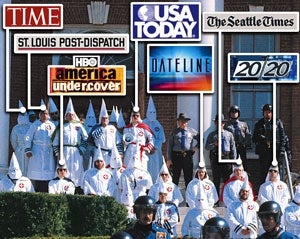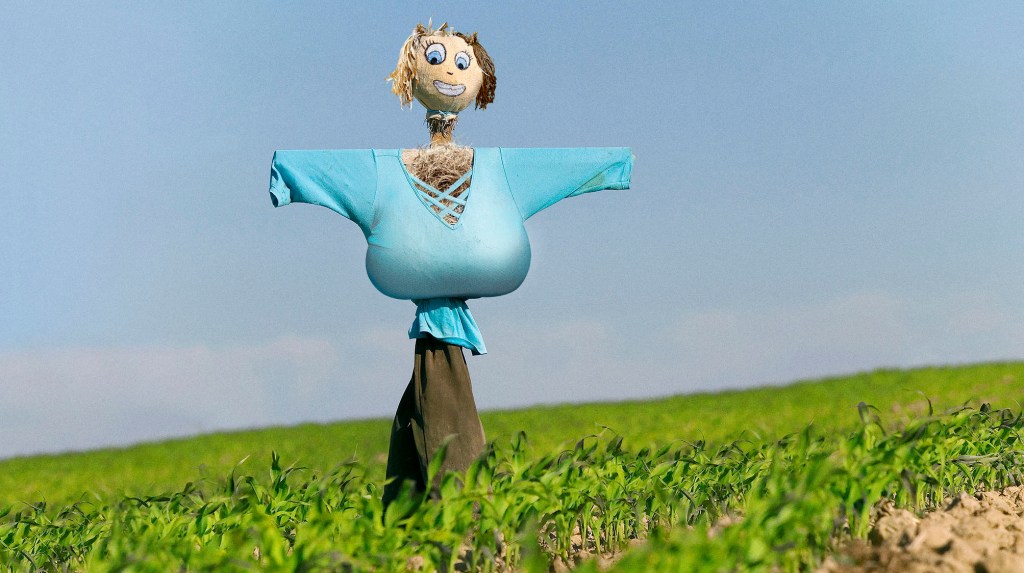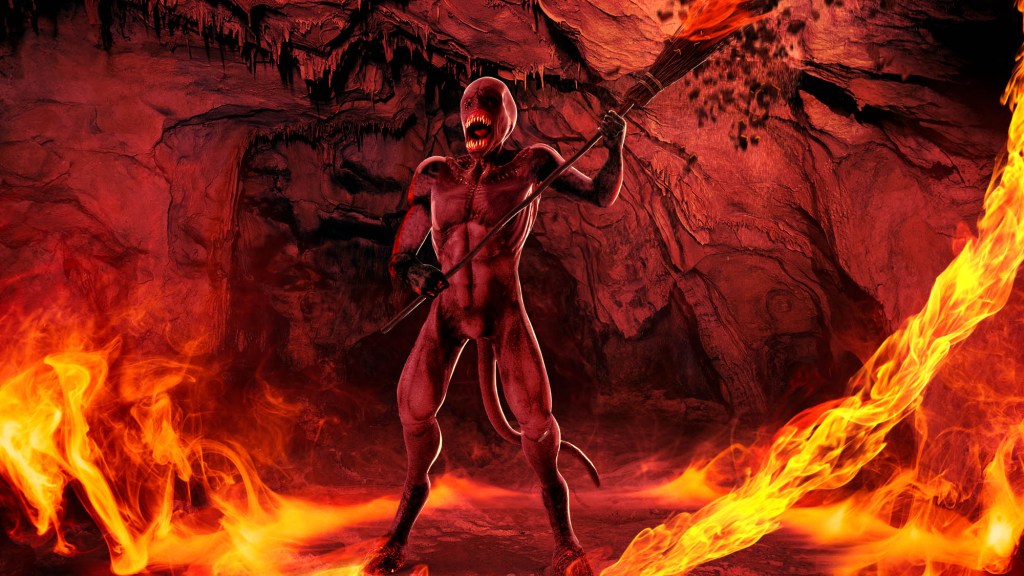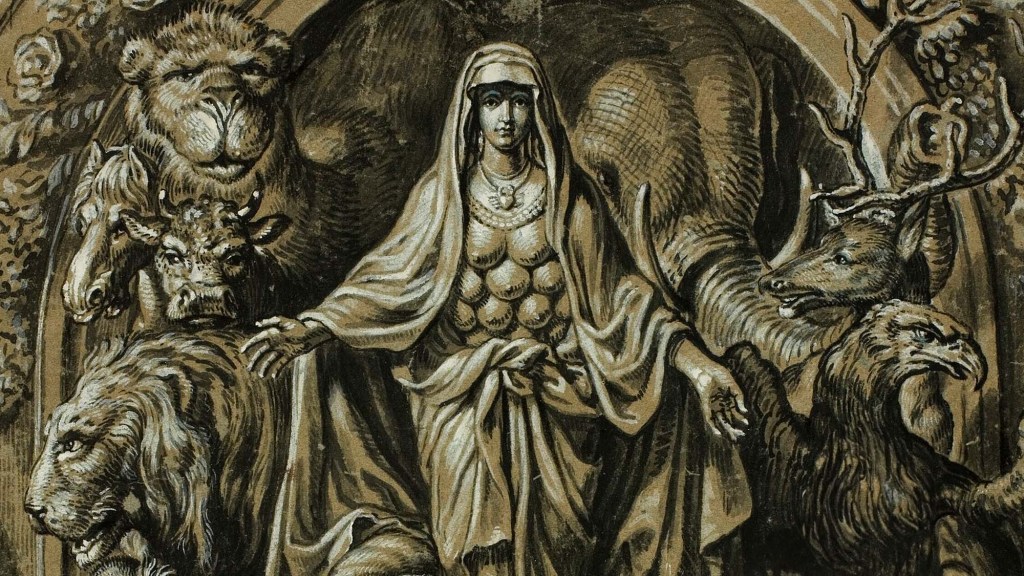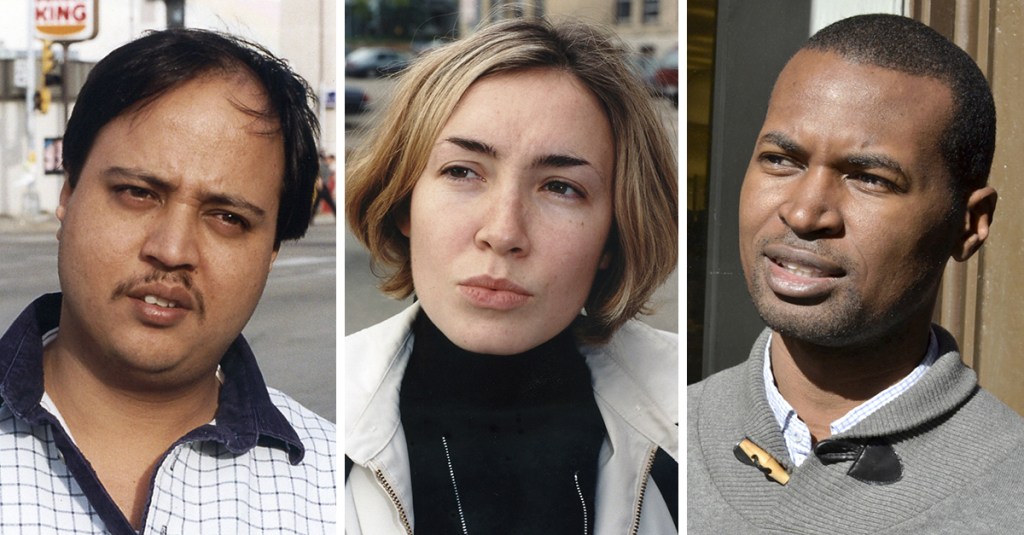SPARTANBURG, SC—Vowing to “defend white Christian America against its mongrel assailants,” some 20 members of the Knights of the Ku Klux Klan and more than 45 investigative reporters posing as members rallied on the steps of Spartanburg’s city hall Saturday.
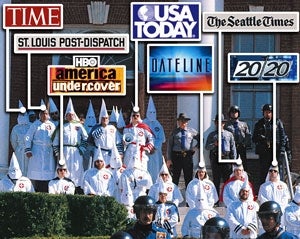
“Don’t blow my cover, but I’m actually here doing a story for Dateline NBC,” said John Larson, a correspondent for the newsmagazine, speaking from under a white hood. “Man, I’ve caught some unbelievable stuff on the digital recorder strapped to my chest. [Dateline executive producer] Neal [Shapiro] is definitely gonna want to lead with this piece.”
Joining Larson in the call for white racial purity were reporters covertly working for dozens of newspapers, magazines, and television programs, including The Washington Post, Newsweek, and 20/20.
“I’m doing an article for The Atlantic Monthly about what it means to be part of the Klan in the 21st century,” said Peter Underwood, a 1999 graduate of Columbia University. “Well, okay, I’m doing it on spec, but I know they’ll go for it. Worst-case scenario, I’m sure I can at least get some of the secret documents I snagged into the Readings section in Harper’s.”
“My editor absolutely eats this undercover shit up,” said Pittsburgh Post-Gazette reporter Brian O’Neill, holding aloft a “Wake Up, White People!” sign. “More important, so does the Pulitzer committee. I think this may finally be my year.”
O’Neill said his white robe “provides a steel cloak of anonymity,” not only from the public, but also from other reporters.
“I was in the hotel this morning, and I ran into Jason Garcia. He’s a reporter at The Orlando Sentinel who I know a bit from SPJ conferences and whatnot,” O’Neill said. “He was pretty vague about what he was doing in Spartanburg. Later, at the rally, I couldn’t help but notice that nice Citizen diving watch he wears sticking out of a Grand Council robe. Damn, that guy always was a go-getter.”
Over the course of the two-hour rally, no journalists were ferreted out by the Klansmen. To the trained eye, however, some differences could be detected. Several times, reporters were seen disrupting the marching formation as they stooped to scribble notes, take photos with digital cameras, or answer cell phones. In addition, a number of lavaliere microphones could be seen poking out of robes.
The undercover journalists were also distinguishable by their footwear. While the real KKK members tended to wear heavy work boots, the journalists were divided between sensible leather oxfords and beat-up sneakers.
“I think I did a pretty good job blending in,” said Debra Rafalski, a freelancer on assignment from Mother Jones magazine. “At one point, I even shouted, ’Let’s send those n-words back to Africa!’”
One of the few journalists to speak before the crowd, Rafalski told rallygoers that the event represented “a triumphant exercise of our First Amendment rights.”
“Free speech, regardless of its content, always deserves full protection—not because it is necessarily right or good, but because our democratic institutions are only safe when all ideas, no matter how hateful or virulent, are allowed to be heard,” Rafalski told the crowd through a bullhorn. “In fact, all of you counter-demonstrators, I respect your right to be here, just as the U.S. Supreme Court has determined that it is our right to be here.”
Added Rafalski: “Oh, and also, the Jews are bleeding this country dry.”
The rally also gave the reporters a chance to interact with Klan members one-on-one. While preparing for the march to city hall, 60 Minutes reporter Richard Carleton chatted casually with a KKK member who was painting a “Hail Hittler [sic]” sign with one hand while holding a beer in the other.
“Isn’t it interesting that the original KKK was organized in Pulaski, TN, during the winter of 1865 by six former Confederate army officers?” Carleton, clad in a white robe, remarked to the man. “We gave our society a name adapted from the Greek word kuklos, or ’circle,’ and our activities were directed against the Reconstruction governments and their leaders, both black and white. As a member of such a tradition-based organization, how does that make you feel? Do you think this fact subverts our modern agenda?”
Carleton then rushed back to his room at the Spartanburg Ramada to transcribe his notes while the exchange was fresh in his mind.
In spite of the significant attendance boost provided by the reporters, some KKK members said the rally turnout fell short of their expectations.
“In my granddaddy’s day, 10, 15, even 20 hundred Klansmen used to come ’round for a rally,” said Valdosta, GA, carpenter Randy Jones, a KKK member since 1988. “The way things are nowadays, we didn’t even get to have horses at the rally because we couldn’t fit their food and transport into the budget.”
Saturday’s rally nearly had to be called off, but was saved from cancellation by the reporters. Less than an hour before the scheduled start time, the chapter realized it did not have the $1,500 “parade fee” required by the city. Fortunately, dozens of new Klansmen like Chicago Tribune reporter Stuart Zimmel volunteered to chip in an extra $50 each.
“I did have to pay membership dues and the extra $50 and buy the robe and all that, but as long as I save my receipts, I should get reimbursed for everything by the Trib,” Zimmel said. “I admit, it’s strange to give money to a group that wrongly persecutes so many, but that just makes it all the more vital that I blow the lid off their inner workings and expose their racist agenda once and for all. Plus, a story like this will look pretty sweet in my clips.”


